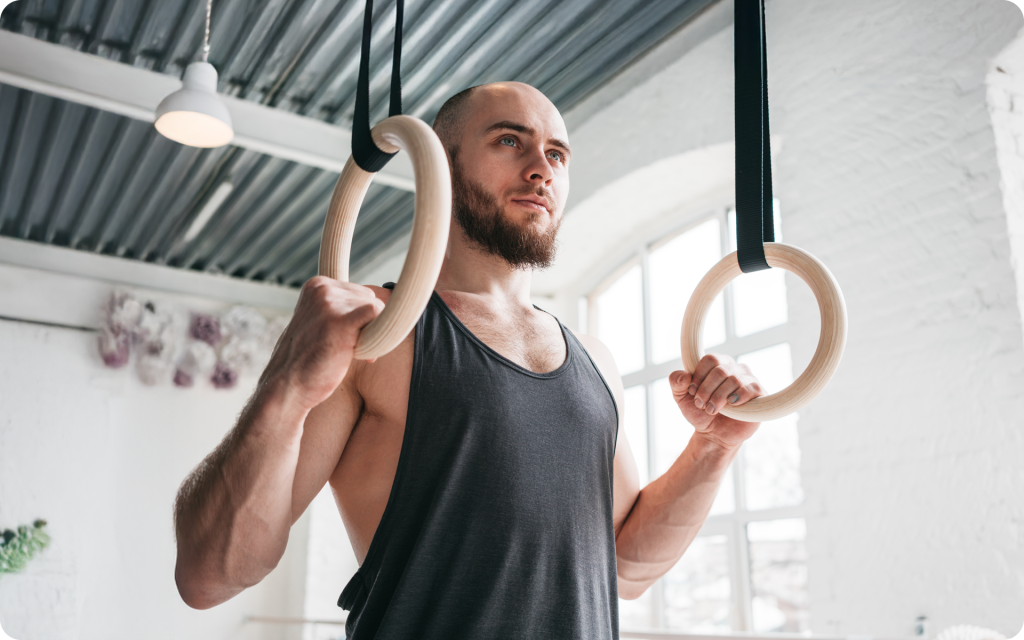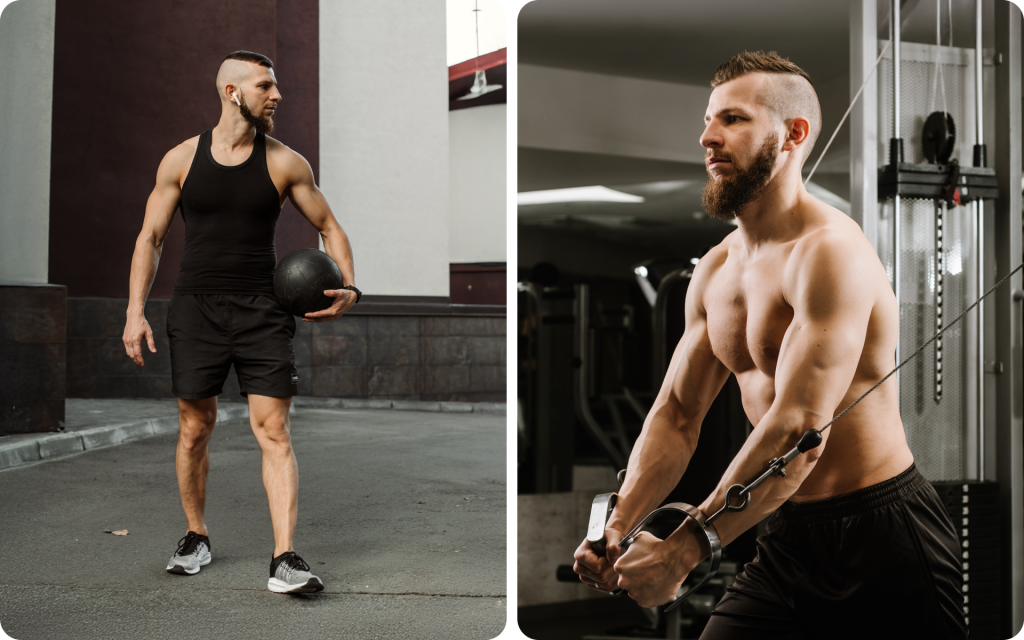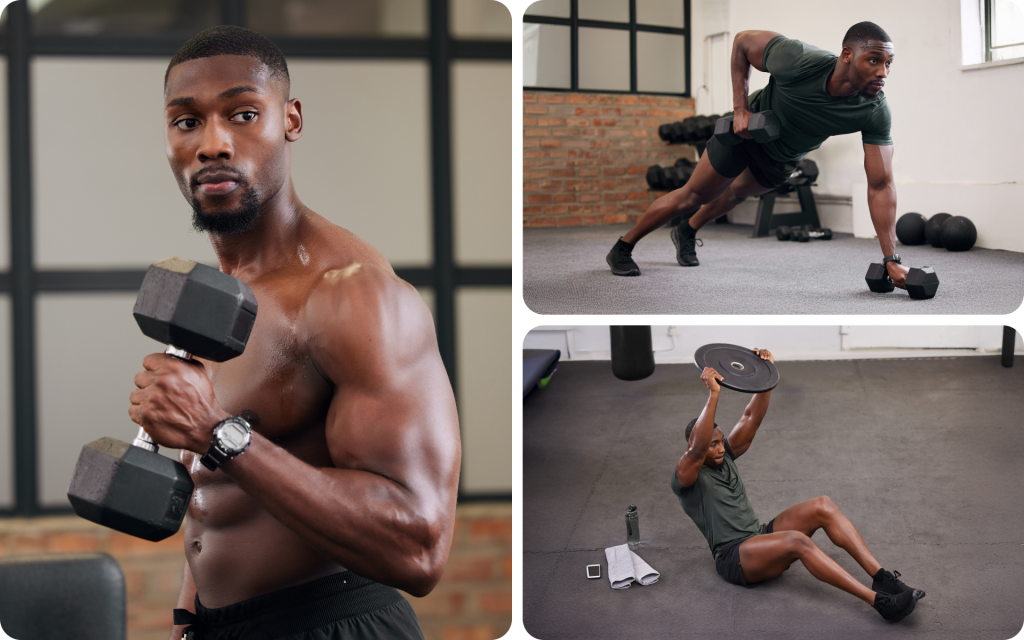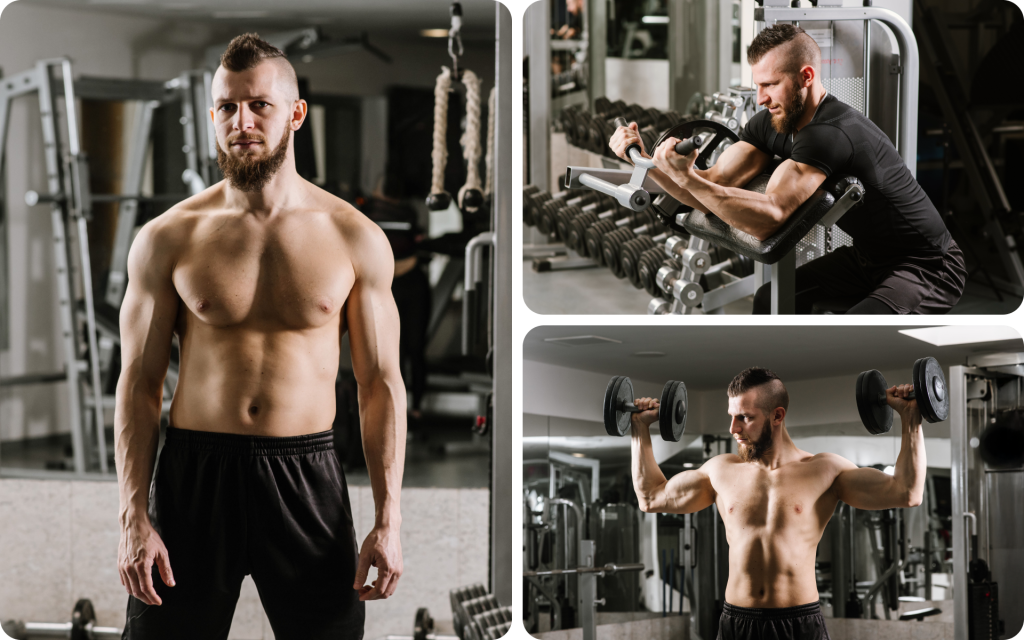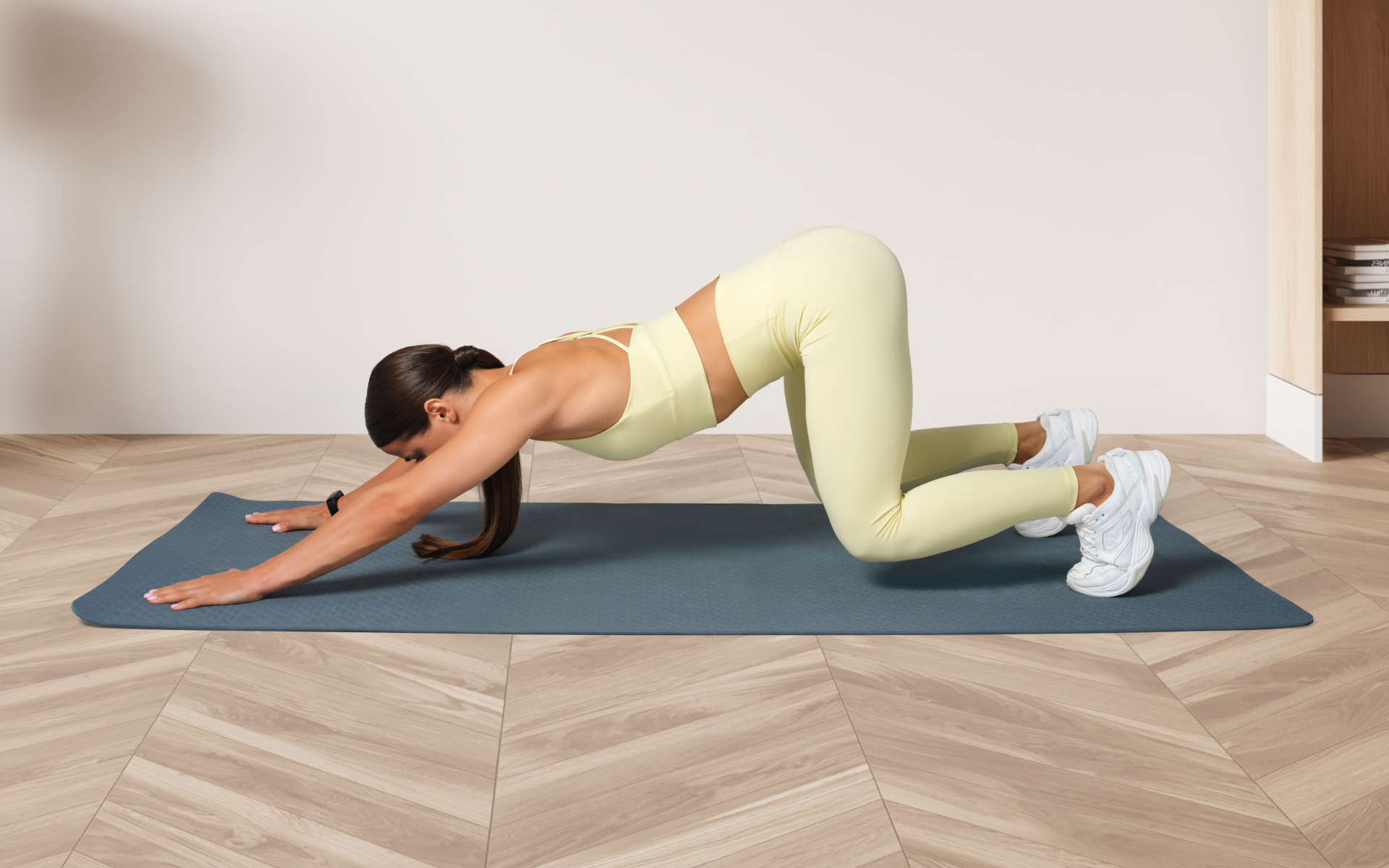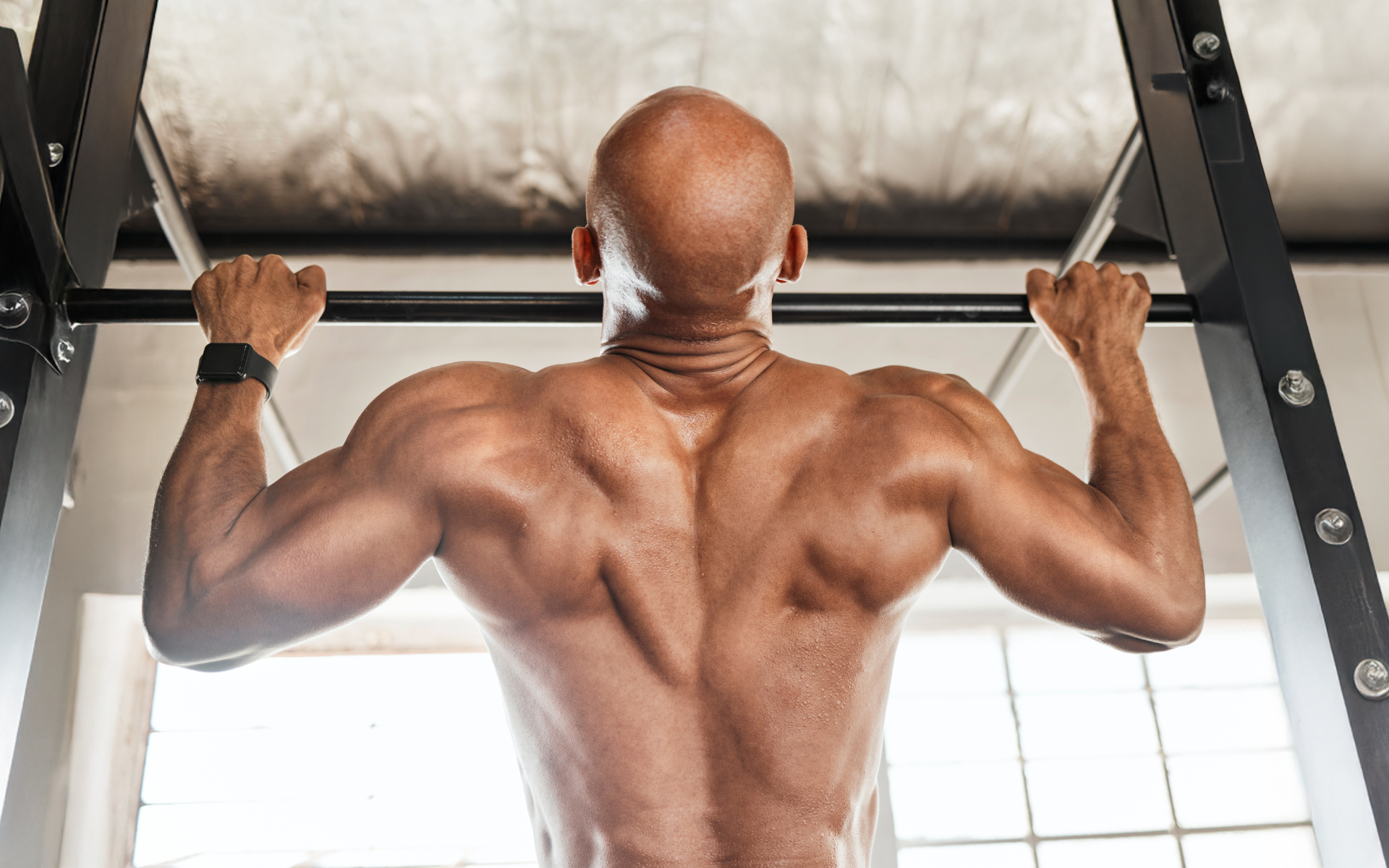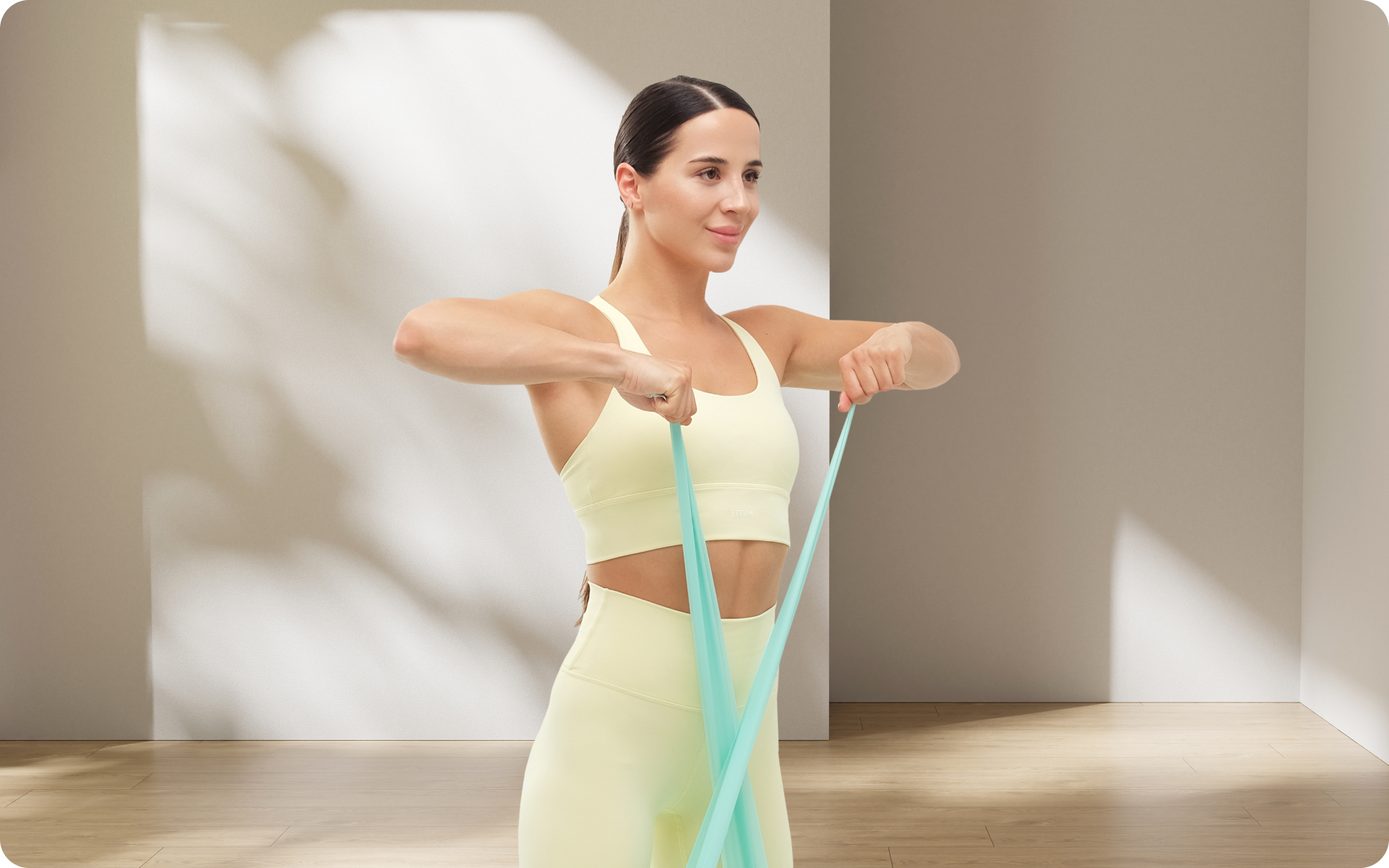Back and biceps is one of the most popular muscle pairings in gym training, and for good reason. These complementary muscle groups work synergistically in many daily activities and athletic movements.
For beginners, understanding how to effectively train these muscles can lay the foundation for long-term strength development and injury prevention.
This comprehensive guide will walk you through the essential principles of back and biceps training, from muscle anatomy to practical workout programming.
Is Back and Biceps Push or Pull?
Back and biceps muscles fall squarely into the “pull” category of movement patterns. This classification stems from their primary function: bringing objects toward your body or pulling your body toward fixed objects.
Your back muscles, which include the latissimus dorsi, rhomboids, and middle trapezius, work together to perform pulling movements in multiple planes. The latissimus dorsi pulls your arms down and back toward your torso. The rhomboids and middle trapezius retract your shoulder blades, which creates stability for upper-body pulling actions (1).
The biceps serve as secondary movers in most back exercises by functioning as primary elbow flexors. When you perform a pull-up or rowing movement, your biceps assist the larger back muscles by flexing at the elbow joint (2). This natural cooperation makes back and biceps an efficient training combination. To learn more about the standing bicep stretch, check out our in-depth article on the topic.
Understanding this pull mechanism helps you recognize why these muscles work well together. Many back exercises incorporate some degree of elbow flexion, which engages your biceps. This relationship allows you to train both muscle groups effectively in the same session while maintaining movement specificity.
Can You Work Out Biceps and Back Together?
Training back and biceps together represents an optimal programming strategy for several reasons. The National Strength and Conditioning Association (NSCA) recommends grouping muscles that work together in compound movements, and back and biceps exemplify this principle perfectly (3).
From a biomechanical perspective, your biceps function as synergist muscles during back exercises. When you perform rows, pull-ups, or lat pulldowns, your biceps naturally contribute to the movement. Training these muscles in the same session takes advantage of this natural recruitment pattern.
Recovery considerations also support this pairing. As your biceps assist in back exercises, they receive indirect stimulation throughout your back training. Following up with focused biceps work allows you to maximize the training stimulus while the muscles are already activated and warm (4).
The neurological benefits prove equally important. Your nervous system learns to coordinate these muscle groups more effectively when trained together (5). This improved coordination translates to better performance in compound pulling movements and reduced injury risk.
Practical scheduling advantages make this combination attractive for most training programs. You can complete your entire upper body pull training in one focused session, which allows adequate recovery time between workouts while maintaining training frequency.
BetterMe: Health Coaching app helps you achieve your body goals with ease and efficiency by helping to choose proper meal plans and effective workouts. Start using our app and you will see good results in a short time.
How Many Exercises Should You Do for Back and Biceps?
Training volume for back and biceps should reflect your experience level and recovery capacity. The NSCA provides clear guidelines for optimal exercise selection and volume distribution (3).
For beginners, 2-3 back exercises and 1-2 biceps exercises provide sufficient stimulus for adaptation. This volume allows you to focus on movement quality while building work capacity gradually. Your nervous system needs time to learn new movement patterns before increasing training complexity (5).
Intermediate trainees can handle 3-4 back exercises and 2-3 biceps exercises. At this stage, you can incorporate more exercise variety while maintaining focus on progressive overload. Your improved work capacity typically supports higher training volumes without compromising recovery (6).
Advanced trainees may perform 4-6 back exercises and 3-4 biceps exercises, depending on their specific goals and recovery abilities. However, more exercises don’t automatically mean better results. Quality and intensity often matter more than total exercise count.
Exercise order significantly impacts your strength expression (4). Perform compound back exercises first when your nervous system is fresh and coordination is optimal. Follow with isolation movements for both back and biceps when fatigue levels are manageable, but the muscles remain activated.
The NSCA emphasizes that strength training should prioritize compound movements early in sessions. This sequencing allows you to handle heavier loads safely while maximizing strength development potential. Dive deeper into the bodyweight bicep exercise with our dedicated article.
Read more: Men’s Calisthenics Workout: 8 Exercises to Build a Lean Physique
What Is a Strong Back and Biceps Workout at the Gym
This evidence-based workout combines compound movements with targeted isolation exercises to maximize both strength and muscle development. The program follows NSCA guidelines for exercise selection, order, and volume distribution.
Workout Structure:
- Pull-ups: 3 sets of 6-10 reps
- Seated cable row: 3 sets of 8-12 reps
- Lat pulldown: 3 sets of 10-15 reps
- Barbell bicep curl: 3 sets of 8-12 reps
- Hammer curls: 2 sets of 12-15 reps
Pull-Ups
Pull-ups represent the gold standard for back development and functional upper body strength. This compound movement targets your latissimus dorsi, rhomboids, middle trapezius, biceps, and posterior deltoids while challenging your core stability (7).
The exercise starts with your hands positioned slightly wider than shoulder-width apart on the pull-up bar using an overhand grip. Your body should hang completely extended with engaged core muscles to prevent excessive arching. This starting position establishes proper spinal alignment and shoulder stability.
Execute the movement by pulling your shoulder blades down and back while flexing your elbows. Focus on bringing your chest toward the bar rather than simply pulling your chin over it. This technique emphasizes optimal lat activation and reduces compensation patterns.
Execution Steps:
- Grasp the bar with your hands slightly wider than shoulder-width apart.
- Hang with your arms fully extended and your core engaged.
- Pull your shoulder blades down and back to initiate movement.
- Flex your elbows while bringing your chest toward the bar.
- Lower yourself under control to the starting position.
Seated Cable Row
The seated cable row provides excellent back development while allowing precise load control and movement customization. This exercise targets your rhomboids, middle trapezius, and latissimus dorsi with significant bicep involvement (8).
Proper setup requires adjusting the chest pad to align with your sternum when seated. Your feet should be planted firmly on the platform with slight knee bending. This position creates a stable base for force production while protecting your lower back.
The movement starts with your arms extended and your shoulders slightly rolled forward. Pull your shoulder blades together while drawing your elbows back toward your ribs. The handle should contact your upper abdomen at the completion of each repetition.
Execution Steps:
- Adjust the chest pad to sternum height.
- Plant your feet firmly with a slight knee bend.
- Extend your arms and allow your shoulders to roll forward slightly.
- Pull your shoulder blades together while drawing your elbows back.
- Bring the handle to your upper abdomen with a controlled tempo.
Lat Pulldown
The lat pulldown offers a scalable alternative to pull-ups while providing excellent lat development and biceps stimulation (9). This exercise allows beginners to build pulling strength progressively while learning proper movement mechanics.
Adjust the thigh pad to secure your legs without restricting hip mobility. Your grip should be slightly wider than shoulder-width with your palms facing forward. This hand position optimizes lat activation while maintaining comfortable wrist alignment.
Initiate the movement by pushing your shoulder blades down and pulling them slightly back. Draw the bar down toward your upper chest while maintaining an upright torso position. Focus on squeezing your lats at the bottom position before controlling the weight back to the starting position.
Execution Steps:
- Adjust the thigh pad for secure leg positioning.
- Grip the bar slightly wider than shoulder width apart with your palms forward.
- Push down and squeeze your shoulder blades together to start.
- Pull the bar to your upper chest while maintaining an upright posture.
- Control the weight back to full arm extension.
Barbell Bicep Curl
The barbell bicep curl represents the fundamental biceps exercise for building mass and strength. This movement targets both heads of the biceps while developing grip strength and forearm stability (10).
Stand with your feet hip-width apart while holding the barbell with an underhand grip at shoulder width. Your elbows should remain close to your sides throughout the movement. This position ensures optimal biceps activation while preventing momentum from assisting the lift.
Start the curl by bending your elbows while keeping your upper arms stationary. Squeeze your biceps at the top of the movement before lowering the weight under control. Resist the urge to swing or use body momentum to complete repetitions.
Execution Steps:
- Stand with your feet hip-width apart with the barbell in an underhand grip.
- Keep your elbows close to your sides throughout movement.
- Bend your elbows while maintaining stationary upper arms.
- Squeeze your biceps at the top of the movement.
- Lower the weight under control to the starting position.
Hammer Curls
Hammer curls target the brachialis and the long head of the biceps while developing grip strength. This variation provides a different stimulus than traditional curls while complementing your overall arm development (11).
Hold the dumbbells at your sides with a neutral grip (palms facing each other). Your elbows should remain close to your torso throughout the movement. This positioning targets the brachialis more effectively than supinated grip variations.
Curl the weights by bending your elbows while maintaining the neutral grip position. Focus on controlled movement speed and full range of motion. The brachialis responds well to higher repetition ranges, which makes this an excellent finishing exercise.
Execution Steps:
- Hold the dumbbells with a neutral grip at your sides.
- Keep your elbows close to your torso throughout the movement.
- Bend your elbows while maintaining a neutral grip.
- Control the weight through the full range of motion.
- Focus on the squeeze contraction at the top position.
When it comes to weight loss, progress is made by inches, not miles, so it’s much harder to track and a lot easier to give up. The BetterMe: Health Coaching app is your personal trainer, nutritionist, and support system all in one. Start using our app to stay on track and hold yourself accountable!
How to Superset Back and Biceps
Supersets involve performing two exercises consecutively with minimal rest between them. This technique can increase training efficiency and metabolic stress while maintaining exercise quality when implemented correctly.
The most effective back and biceps supersets pair a compound back exercise with a biceps isolation movement. For example, you can combine lat pulldowns with barbell curls. This approach allows your back muscles to recover partially while your biceps work, then vice versa.
Pre-exhaust supersets represent another effective option. You can perform bicep curls immediately followed by seated rows. This sequence pre-fatigues the biceps, forcing your back muscles to work harder during the compound movement.
Antagonist supersets pair back exercises with pushing movements such as chest or shoulder exercises. While this doesn’t directly involve biceps, it can increase overall training efficiency for full upper-body sessions. Our previous post goes into great detail about calisthenics workout for back.
Effective Superset Combinations:
- Seated cable row + barbell curl
- Lat pulldown + hammer curl
- Pull-ups + EZ-bar curl
Rest periods between superset pairs should extend to 90-120 seconds to allow adequate recovery for both muscle groups. This timing maintains training intensity while supporting proper exercise form throughout your session.
Read more: Calisthenics Workout Plan for Men Who Want to Get Lean
Can I Train Back and Biceps Every Other Day?
Training frequency depends on your recovery capacity, training intensity, and overall program structure. For most beginners, training back and biceps every other day may exceed optimal recovery parameters.
The NSCA recommends 2-3 training sessions per week for beginners, with at least 48 hours between sessions targeting the same muscle groups. Your muscles require time to repair, adapt, and grow stronger between training stimuli.
Advanced trainees with superior recovery abilities might handle higher frequencies, but this requires careful monitoring of performance indicators and fatigue levels. Signs of overreaching include decreased performance, elevated resting heart rate, and compromised sleep quality.
As smaller muscles, your biceps typically recover faster than your back muscles. However, as biceps assist in many exercises, they receive indirect stimulation throughout your back training. This relationship affects recovery timing for both muscle groups.
A more sustainable approach involves training back and biceps 2-3 times per week with adequate recovery between sessions. This frequency allows for progressive overload while supporting proper recovery and adaptation.
Recommended Training Frequencies:
- Beginners: 2 times per week
- Intermediate: 2-3 times per week
- Advanced: 3-4 times per week (with careful monitoring)
You can effectively pair biceps with pulling muscle groups such as the back, as these muscles work together during many exercises. Alternatively, pairing biceps with triceps or shoulders is also acceptable and can fit well in a split routine. It’s best to train your back muscles before you train your biceps. Back exercises are compound movements that require more strength and energy, while biceps are smaller muscles that assist during back exercises. Training your back first lets you maintain better form and lift heavier weights. Yes, training back and biceps together is both efficient and common. Many back exercises indirectly target the biceps, which allows you to maximize workout productivity and recovery when combining these muscle groups. Four total exercises for back and biceps can be sufficient, especially for beginners. Focus on 2-3 compound back exercises and 1-2 direct biceps movements for balanced development and efficient recovery. Adjust the number based on your experience and goals.Frequently Asked Questions
What can I pair with bicep day?
Should I train back or biceps first?
Is it good to hit back and biceps?
Are 4 exercises enough for back and biceps?
The Bottom Line
Successful back and biceps training requires patience, consistency, and attention to proper movement mechanics. The principles outlined in this guide provide a framework for progressive development while minimizing the risk of injury.
Remember that strength development follows a predictable timeline. Beginners can expect rapid improvements in the first 6-8 weeks, primarily due to neurological adaptations. Structural changes in muscle size typically become apparent after 8-12 weeks of consistent training.
Focus on mastering these fundamental exercises before you progress to more complex variations. Your investment in movement quality during the beginner phase pays dividends throughout your training journey.
DISCLAIMER:
This article is intended for general informational purposes only and does not serve to address individual circumstances. It is not a substitute for professional advice or help and should not be relied on for making any kind of decision-making. Any action taken as a direct or indirect result of the information in this article is entirely at your own risk and is your sole responsibility.
BetterMe, its content staff, and its medical advisors accept no responsibility for inaccuracies, errors, misstatements, inconsistencies, or omissions and specifically disclaim any liability, loss or risk, personal, professional or otherwise, which may be incurred as a consequence, directly or indirectly, of the use and/or application of any content.
You should always seek the advice of your physician or other qualified health provider with any questions you may have regarding a medical condition or your specific situation. Never disregard professional medical advice or delay seeking it because of BetterMe content. If you suspect or think you may have a medical emergency, call your doctor.
SOURCES:
- Back Muscles (n.d., physio-pedia.com)
- Biceps Brachii (n.d., physio-pedia.com)
- Basics_of_strength_and_conditioning_manual (2012, nsca.com)
- Exercise Order in Resistance Training (2012, link.springer.com)
- The knowns and unknowns of neural adaptations to resistance training (2020, link.springer.com)
- Are Changes in Physical Work Capacity Induced by High-Intensity Functional Training Related to Changes in Associated Physiologic Measures? (2018, mdpi.com)
- Electromyographic analysis of muscle activation during pull-up variations (2017, sciencedirect.com)
- The Effect of Performing Bi- and Unilateral Row Exercises on Core Muscle Activation (2015, pubmed.ncbi.nlm.nih.gov)
- Electromyographic Analysis of Three Different Types of Lat Pull-Down (2009, journals.lww.com)
- Differences in electromyographic activity of biceps brachii and brachioradialis while performing three variants of curl (2018, pmc.ncbi.nlm.nih.gov)
- Comparison of electromyographic activation and number of repetitions completed between traditional, hammer and reverse dumbell bicep curl among trained men (2023, ui.adsabs.harvard.edu)

